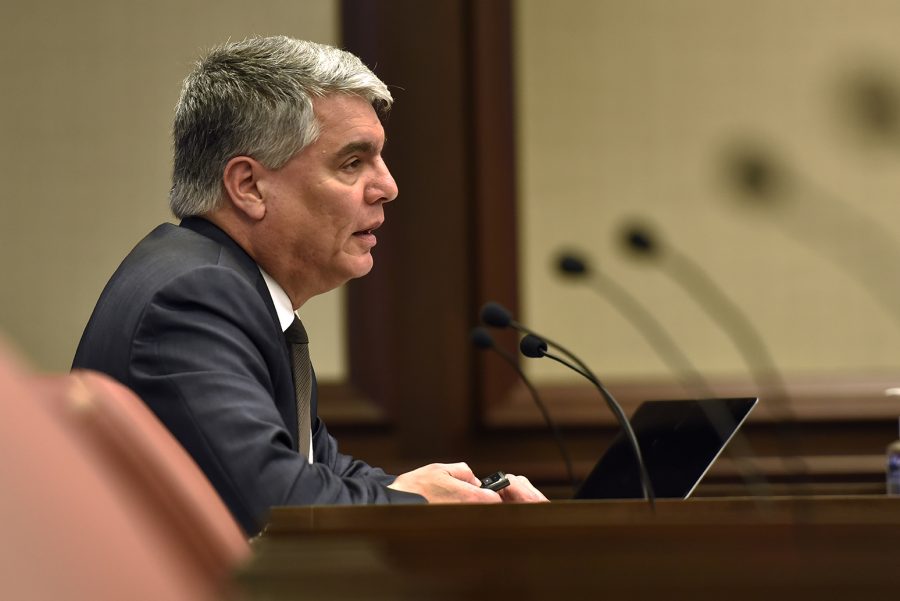Almost seven months after Hurricane Harvey devastated the Gulf Coast, the University of Texas Marine Science Institute is still trying to get back on its feet. On Monday, the UT System Board of Regents approved funding to assist the rebuilding efforts.
According to a press release from UT News, UT President Gregory Fenves announced that the Board of Regents authorized $16.5 million in bonds to help rebuild MSI. The funds would come from the Permanent University Fund, which is used to benefit all 14 UT System institutions and the Texas A&M System, to support construction and other expenses needed to improve buildings.
MSI is located in Port Aransas, only miles away from the spot of Harvey’s landfall. During and after the hurricane, Texas A&M-Corpus Christi was responsible for as much as 80 percent of the faculty, students and staff displaced by the storm. With an estimated 20 inches of rain, the campus is still recovering from extensive roof damage and subsequent water damage, associate professor James McClelland said. Right now, most MSI faculty and students are back in Port Aransas, but some are still finishing up experiments at Texas A&M-Corpus Christi.
“One great thing about all of this is that no one lost their job,” professor Edward Buskey said. “It was a little bit inconvenient working in an extra space at Texas A&M-Corpus Christi, but they were great to us there and very accommodating.”
It’s difficult to keep operations going, McClelland added. Immediately following the storm, researchers focused on activities, such as writing papers, that they could do without access to lab space. They have gradually begun to feel the bite of being without new work, McClelland said.
“People have been very generous (at) other institutions in terms of offering us a place to hang our hats,” he said. “But all of our equipment and lab supplies — everything — is either packed up in boxes or stored away in the labs we abandoned. (Not) having access to our lab space has been the most challenging part of this.”
McClelland was previously moved from his own lab into a temporary lab space last spring while the institute installed a new air-conditioning system, but Harvey pushed back a return to their offices by about six months. It has almost been a full year since they have had access to their own lab.
“A lot of us made our way back with the expectation of continuing work, and we’re sort of stuck in a holding pattern right now because construction timelines keep getting longer and longer,” McClelland said. “A lot of people have pulled up roots from where they were waiting it out and are back in Port Aransas now, stuck in between. “
Many students were able to move into the recently repaired student housing during spring break, but apartments in the area are still undergoing construction, making them scarce.
“Who this really affects directly is the students who are working on their master’s thesis or doctoral dissertation,” McClelland said. “They’re the ones who are working toward a degree. So yes, for my lab and I, it has slowed things down, but who it affects most is the students who are on a different timeline of trying to get in and out of whatever particular program they’re a part of. Pushing things back a year is a big deal.”
Although the timeline is different for each building, the campus is expected to be back up and running by mid- to late summer. After finishing up student housing, construction efforts are now shifting to the Estuarine Research Center, which suffered the most from the storm, according to Buskey.
“Things would have been a lot worse if we hadn’t prepared, moved equipment up to safer places, covered everything with plastic, backed up all our computers and took our hard drives with us,” Buskey said. “We have a very detailed hurricane procedure that we follow, and as a result of that, the damage we received was the least we could have gotten.”















